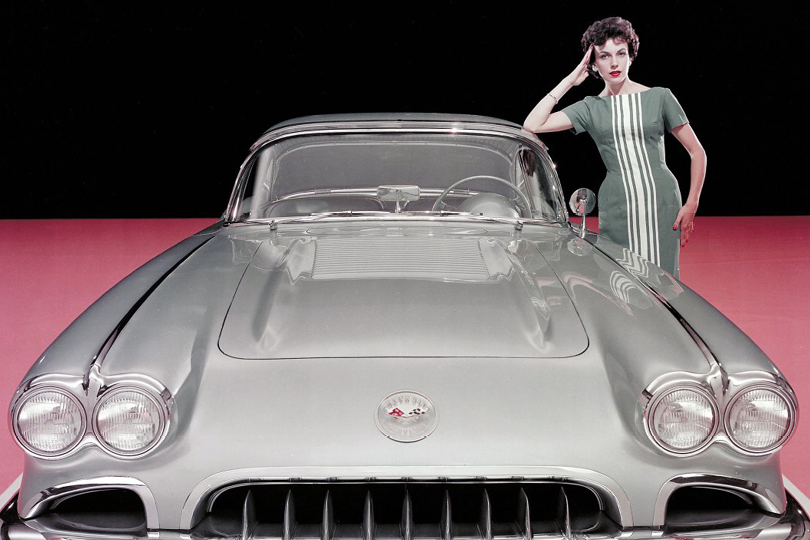
1951: Harley Earl, GM’s chief designer, drives the Le Sabre concept car to WatkinsGlen, where he falls in love with the Jaguar XK120. The wheels begin to turn.
1953: Chevrolet reveals the Corvette dream car on January 17, 1953, at New York’sWaldorf Astoria hotel, as part of the kickoff to that year’s GM Motorama. Named aftersmall, highly maneuverable naval escort ship, the show car is also known as the EX-122.On June 30 of the same year, the first production 1953 Corvette rolls off the assemblyline in Flint, Michigan. Production is capped at 300 units, all in the now iconic PoloWhite/Sportsman Red exterior/interior color scheme and powered by the 150-hp,three-carb “Blue Flame” inline-six and a two-speed Powerglide transmission. The onlyoptions are a heater and an AM radio.
1954: Corvette production begins at GM’s St. Louis, Missouri, facility on January 1.Chevrolet expands the exterior color choices to include Pennant Blue, SportsmanRed, and Black. Beige is added as an interior option. The straight-six engine getsbumped to 155 hp. Just 3640 Corvettes are produced by year’s end.
1955: The small block Chevy V-8 makes its first appearance between a Corvette’sfiberglass fenders, and a three-speed manual appears as an option. The year closeswith the six-cylinder bidding adieu. Production totals 700 units.
1956: Factory-installed removable hardtops are offered for the first time, and the exteriorgets exposed headlamps, sculpted side coves, and roll-up windows. Seatbeltsmake the scene as a dealer-installed option, and one-hundred and eleven buyersdrop $188.30 on a high-lift cam (order code: RPO #449). Head Corvette engineer (andfuture legend) Zora Arkus-Duntov tells the brass to go racing, but his pleas for a racingprogram fall on deaf corporate ears. Two four-barrel carbs enhance the 265-cubic-inch (4.3-liter) V-8, and our own Karl Ludvigsen (back when we were known asSports Cars Illustrated) deems the ’56 credible: “Without qualification, General Motorsis now building a sports car.”
1957: The V-8 grows to 283 cubic inches, and can be ordered with fuel injection anda four-speed manual transmission. (Our original June 1957 test says the setup “worksvery well indeed.”) So equipped, the small block produces up to 283 horsepower,propelling the fiberglass wonder to a reported 132 mph. An optional column-mountedtach makes its first appearance on fuelie Vettes.
1958–1962: A redesigned hood with louvered vents and 160-mph speedo appear for1958, while 1960 brings an aluminum radiator option. 1961 marks the Corvette’s firstuse of four round taillights, and the aluminum radiator becomes standard. That year’smild styling tweaks mean the exhaust no longer exits through the bodywork. Theengine grows to 327 cubic inches (5.4 liters) in 1962, which was also the last year forthe solid rear axle and (until the C6) exposed headlamps. We note in our 1962 test that“rear-axle bounce is a problem on standing starts, in spite of the torque arms abovethe axle.”

